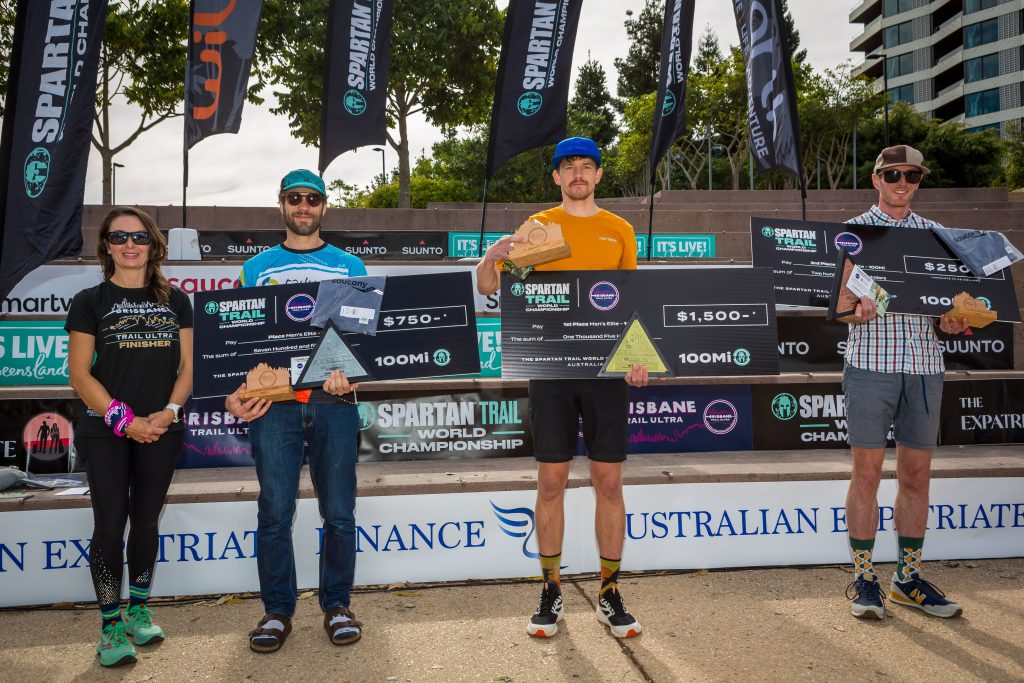I have just returned from a third-place finish at the Brisbane Trail Ultra 100-mile race on the Spartan Trail World Championships tour. The running race traversed 160 kilometres and climbed 8,000 metres through rough terrain in the D’Aguilar Range before a stunning finish in downtown Brisbane.
This race was my fourth major ultra within five months, and the result has solidified a growing confidence that I can be competitive internationally.
Read on for my full unfiltered race account.
The lead in
I arrived in Brisbane a couple of days ahead of the race and checked into an inner-city apartment. The next morning, I went out for a jog along the course’s final few kilometres and immediately felt weird.
In 36 hours’ time I would be waging war with the bush and mountains in one of Australasia’s toughest ultrarunning races, yet here I was jogging past people in an urban environment strutting about in suits and walking bouffy little lap dogs.
Aside from the weirdness of my surrounds, these city streets were a great space for me to think about what I wanted to achieve in this race. Different to usual, my focus wasn’t going to be on smashing myself to run fast at all costs, instead I was there to learn my trade and build my experience for next season.
I only ran my first miler (100-mile race) five months ago in Tarawera where I debuted in 17 hours 52 minutes and came in 12th overall on a relatively easy course. That race had been satisfying at the time – but in hindsight I have felt bitter disappointment.
My Tarawera race came unstuck in the last 50 kilometres, when I paid the price for earlier exuberance, stopped eating, and went into dark places. The icing on the cake for me has been the subsequent realisation that I am a faster athlete than those who passed me in those torturous last 50 kilometres.
This time round, I wasn’t going to make these mistakes. In Brisbane I was determined to run within myself and end the day full of confidence. My big goals are ahead and so Brisbane would be a stepping-stone for me.
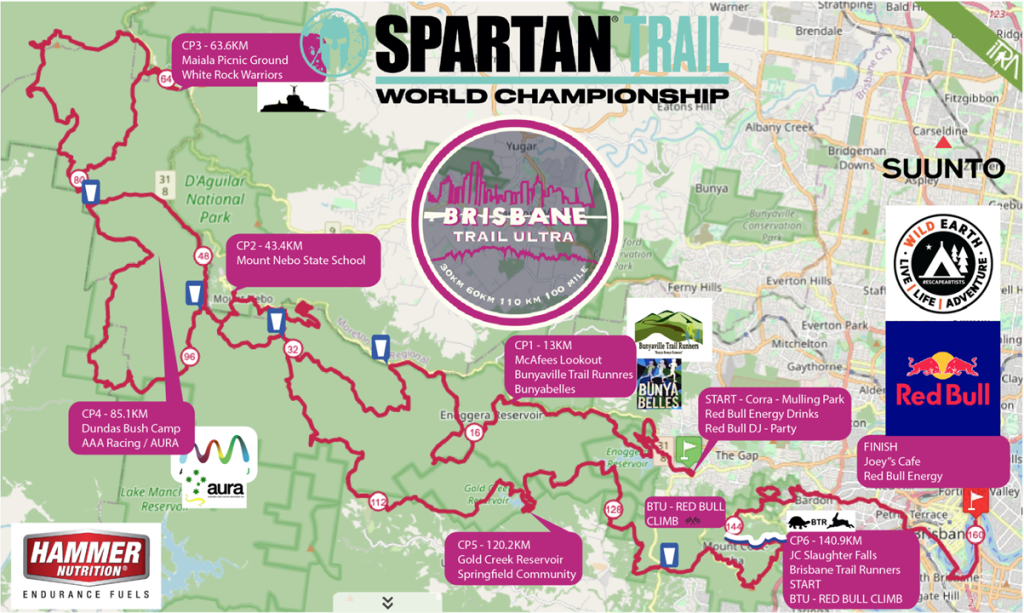
The race itself
The race started in the dark at midnight on Saturday – a brutal time to lace up the hooves as it meant we were starting racing already deprived of a night’s sleep. The start line was west of Brisbane and it would be all bush and mountains for the next 150 kilometres until we returned to the city for the final 10 kilometres of the race.
As the starter’s horn went off, we were straight onto rocky single trail. I settled into about 8th position and concentrated on keeping upright given this was technical running under headtorch. The early hills were steeper than I had expected, and I realised that it was going to be a long day given the hardest climbing within the race’s 8,000 metres of vertical ascent was not due until halfway.
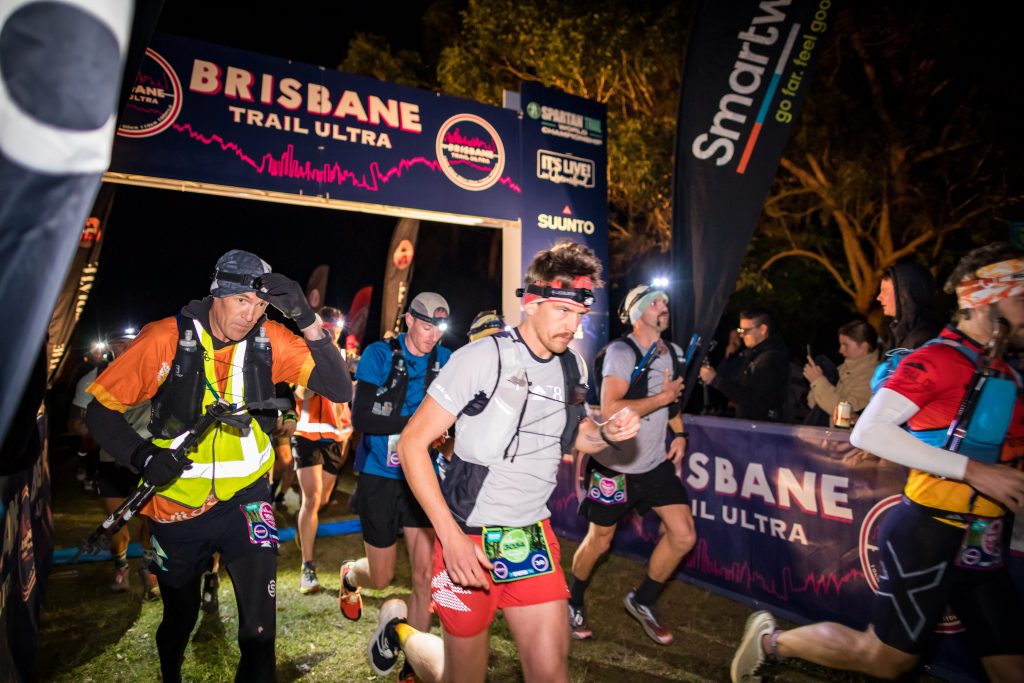
I slowly moved up through the field and, by the time we reached a major checkpoint at around 45 kilometres, I was in 4th. I was running in a chase group of three, together with a local runner and a Polish athlete (Piotr Babis) who would be the eventual champion on the day.
This checkpoint was the first opportunity to meet our support crews. I was lucky that my wife Maddy had travelled with me and her support was going to be a crucial factor in my day.
Unfortunately this first aid station didn’t go smoothly – the stress of an F1-style pitstop in a live race environment proved to be a bit different to our quick practice the day before. But despite a few momentary mishaps, the main thing was that the food went in, my vest was restocked with goodies and I was back on the trails in tip-top shape ready for action.
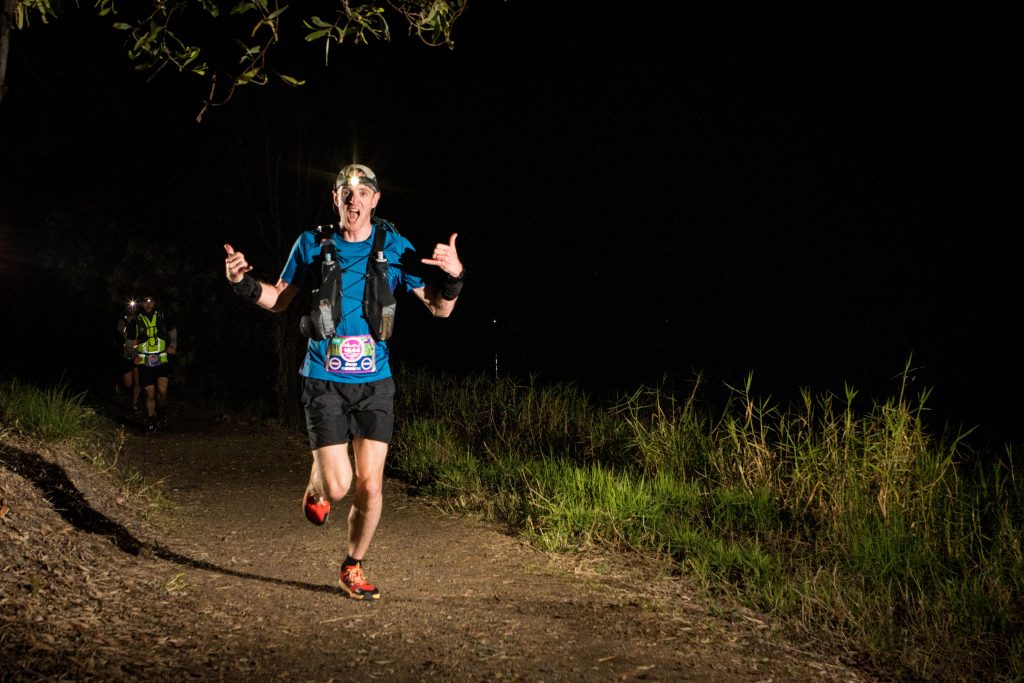
By 50 kilometres, we left a gully and started a major climb. At 10 kilometres long, this would be our longest climb of the day, but certainly not the steepest, as the third quarter of the race was to be characterised by a brutal sawtooth pattern of ups and downs.
I enjoy climbing. Most other athletes seem to struggle on the ups, but I am lucky my Arrowtown home is surrounded by mountains and so they are second nature to me. When races hit a major climb the pace slows, my heartrate comes down, and I sync into a rhythm where my mind begins to wander.
This time round I began to reflect on the culture of Australian ultrarunning. The Aussies are serious fanatics when it comes to trail running – they wear the latest colourful gear and can name all the top runners starting each event. But some of the fans get a bit weirded out when they are confronted with someone out of leftfield they don’t know, such as Benje Patterson the ultrarunning economist from Arrowtown, New Zealand.
Without a lengthy CV to backup my ultrarunning credentials, a feeling had emerged that this kiwi would blowout and the local heroes would prevail. Don’t get me wrong, people were still being supportive, but you could also sense their scepticism. I’d show them I thought!
As we crested the climb around 60 kilometres in, the sun finally began to rise. Daylight came as a relief, after more than six hours of trying not to get lost in the dark windy maze of bush trails. The sunlight energised me and feelings of sleep deprivation dissipated. I felt brilliant and was looking forward to the next 100 kilometres of the race.
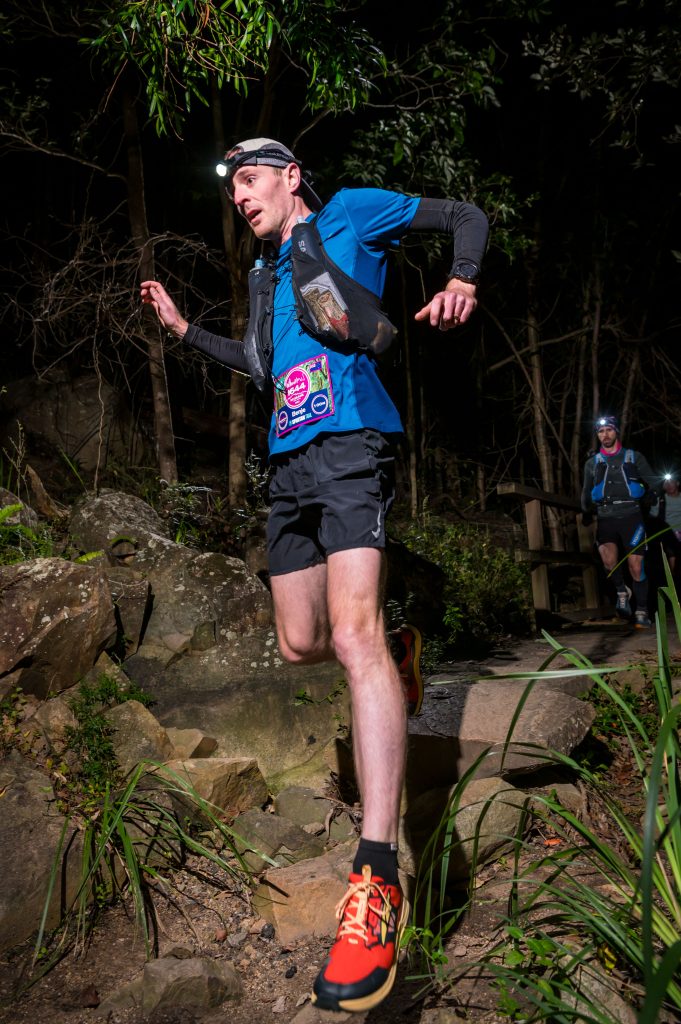
By 65 kilometres we entered another checkpoint and this time it went super smooth. Maddy restocked my vest with food and drink, while I shovelled in creamed rice, and sacked a couple of cans of coke and ginger beer. I was to learn at that point that the early race leader had got lost in the dark and my chase group were now the leaders on the trail. Bad for him, but it’s an occupational hazard and why I had been so cautiously following the map on my watch during the hours of darkness.
Hitting the trails after this checkpoint, it was still me, the Pole, and the local runner. We were running in a nice rhythm together. At times we were chatting, while at others there was silence.
Piotr the Pole even dropped behind a few metres at one stage to listen to a podcast so it must have been pretty shit chat in hindsight!
The main thing is that I was eating and drinking well, making smart decisions around pace, and feeling like I was running within myself.
The trails slowly turned more challenging as we approached halfway – they became super steep, and the descents rattled me. I am a fast descender, but these trail surfaces were really confronting.
The trails were very dry, with a loose layer of rock that slid everywhere like ball bearings. There was also a lot of undergrowth around the trail edges and windblown sticks to deal with. I struggled with grip, while simultaneously also getting quite scratched and cut up.
By 85 kilometres we sped into a checkpoint just past the race’s halfway mark. I had a super-fast stop and exited the checkpoint in first. Taking the lead wasn’t about trying to shake off the others, it was just an eagerness to keep going and minimise my stoppage time. I knew that the next 35 kilometres were going to be the race’s toughest and those miles weren’t going to run themselves!
A few kilometres along the trails, Piotr caught me and took off – I could see he was in great shape and thought good luck. I wouldn’t be chasing him, I was feeling content and would stick to my own strategy.
From there it was brutal with several thousand metres of razor-sharp climbs and descents so steep ropes had been placed to lower yourself. This 35-kilometre segment was one of the slowest and hardest of any race I had been involved. But I never stopped, never faltered, and I entered the next aid station at 120 kilometres feeling on track.
I stopped a moment or two longer at the 120-kilometre aid station than I had at others. At the Tarawera miler back in February, the wagon wheels had completely fallen off for me by this stage, so I really made an effort to eat a lot for energy over those the final 40 kilometres.
The cool thing exiting this aid station was that Maddy joined me – in 100-mile races it is encouraged that athletes have support runners during the later stages as a morale boost and safety mechanism.

The next 20 kilometres were tough. There was way more climbing than I had anticipated (another 1,250 metres of climbing) and the terrain was rough underfoot. During this section, I was passed by another runner who had picked up the pace. Being passed didn’t faze me because although I was tired, the kilometres were still ticking by at a steady rate and my pace wasn’t slowing.
As we approached the city, the support from fans on course was incredible and I felt buoyed. By this stage, all scepticism had vanished and the Aussie fans were all screaming at me by name and urging me on for a top finish!
The final 10 kilometres of the race quickly changed from technical trails to smooth pavements. I began to quicken my pace and the kilometres were rolling off every five minutes or so. Unlike Tarawera, where I battled to the end, this time round I felt in control and I was enjoying my experience.
We crested the final climb after 160 kilometres and I ran the final few metres alone to the spectacular finish line among the city lights. I crossed the line in third place in 20 hours and 25 minutes and I felt elated. Not only was the body still in good shape, but this was a competitive time that would have won the race some years. It was an honour sharing the trails with Piotr who had managed to slice an hour off the race record.
My mission in Brisbane had been to learn, dial in my systems, and finish feeling like I still had gas in the tank to execute an even faster race next time. In that sense – it was mission complete!
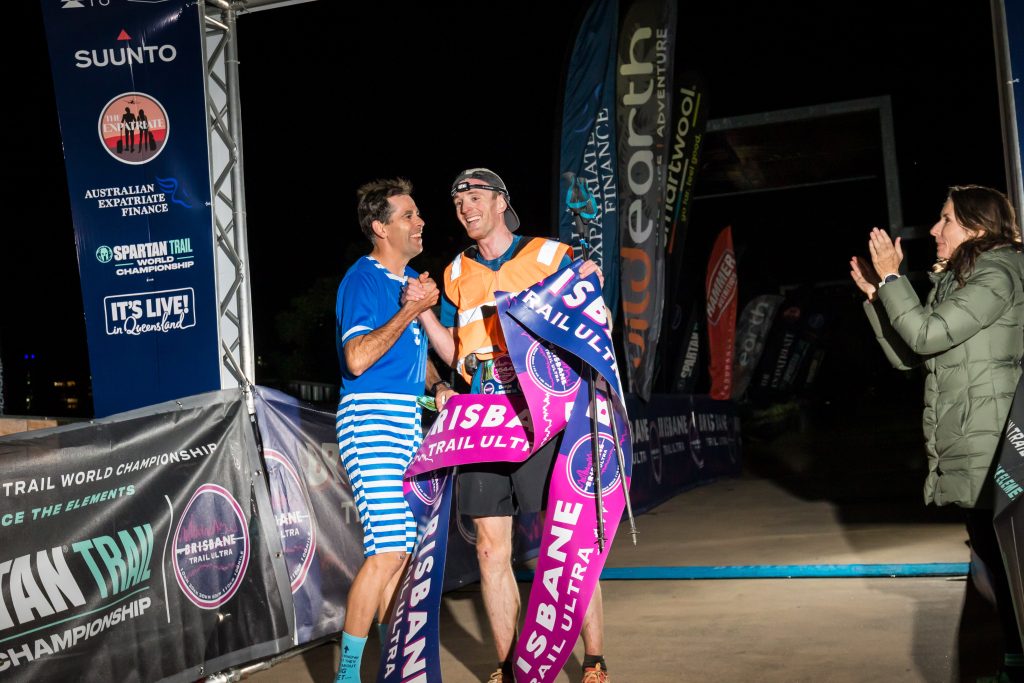
Where to from here?
This podium finish at the Brisbane Trail Ultra 100 mile, which follows on from a fifth place in the Ultra-Trail Australia 100-kilometre race in May, has confirmed to me that I can be competitive in elite races internationally. That sense of achievement gives me a great feeling of satisfaction and builds my confidence for next season.
But it has been a long season and I now need time off to let the body heal. I won’t be running very much over the next couple of months and will instead enjoy getting fresh air on skis up the mountain. I will also eat a bit more crap than usual and probably drink a few too many craft beers.
My mind will also soon turn to plotting my racing schedule for next season. My key goals for next season will be about nailing a world class 100-mile time and charting a qualification path into an elite field at a major Northern Hemisphere race. Beyond that headline I can’t reveal too much just yet, as I genuinely don’t know what this goal is going to involve. But I do know that I am not getting any younger and I am determined to find out where my limits really lie!
